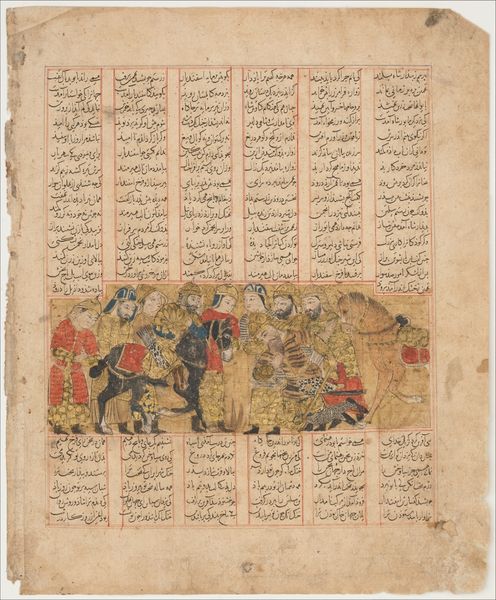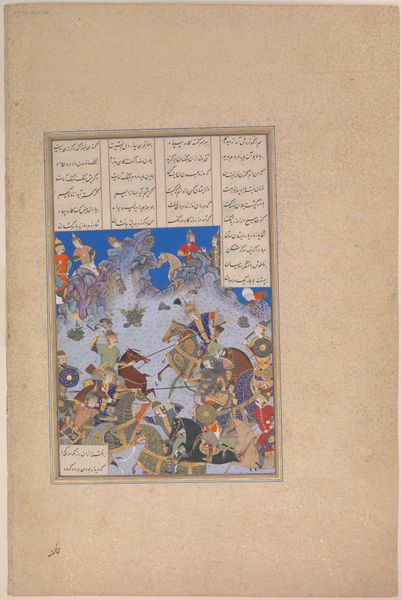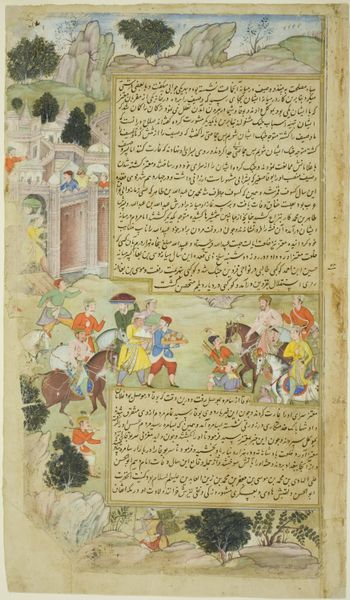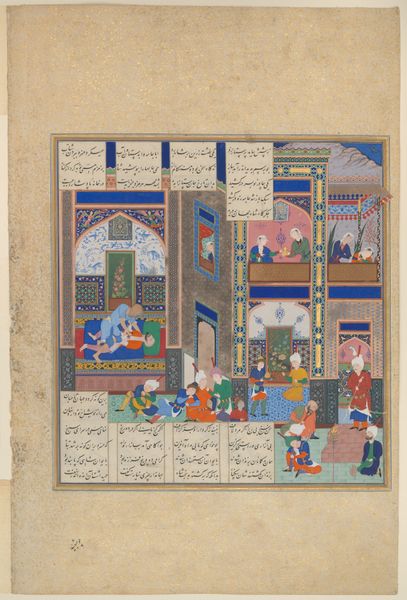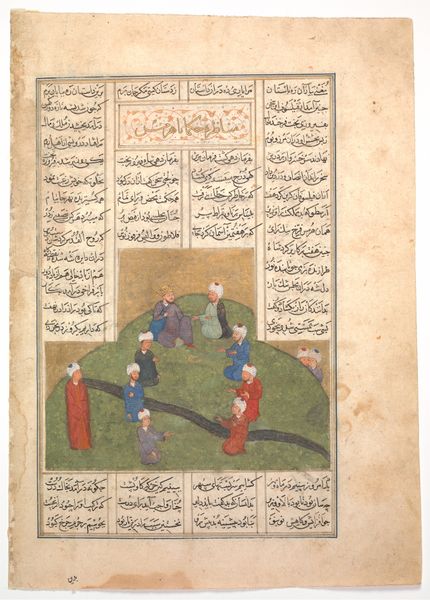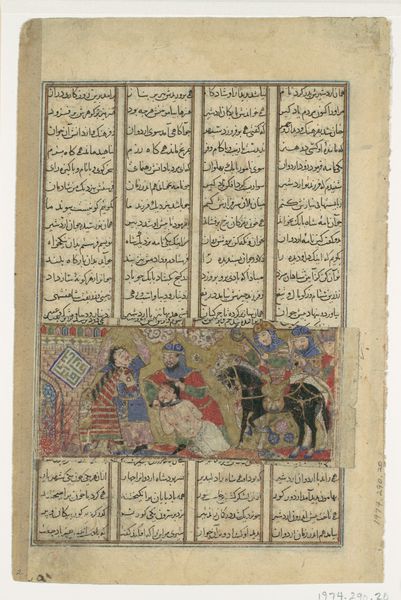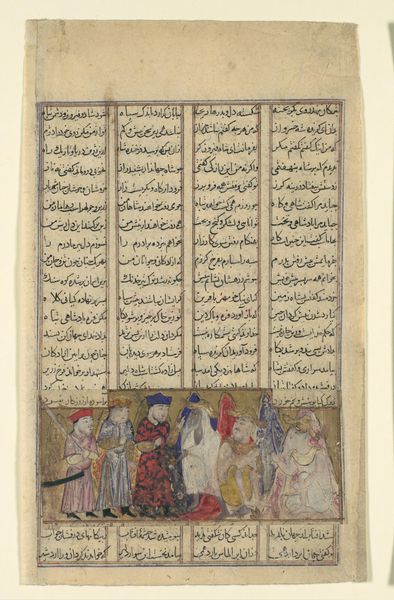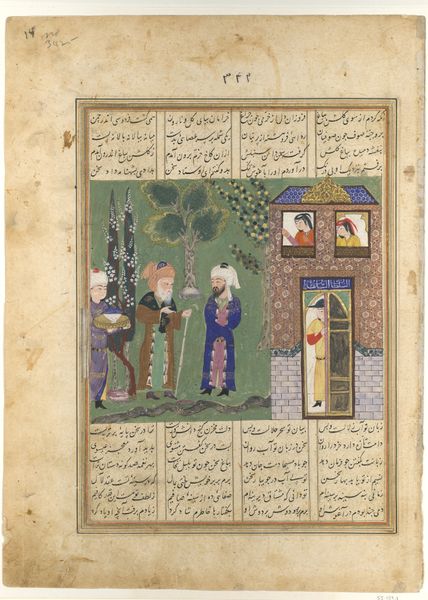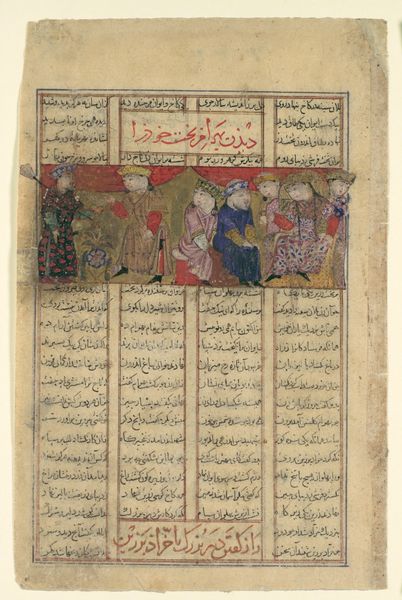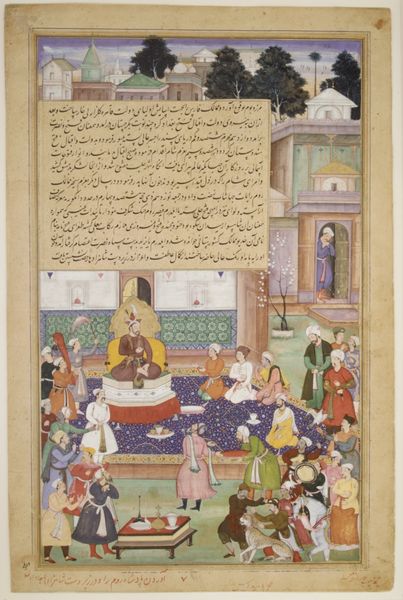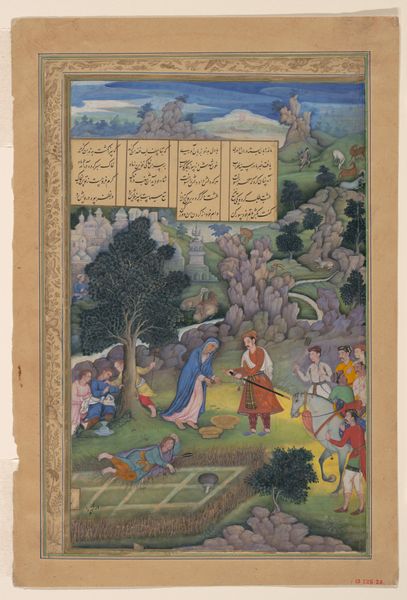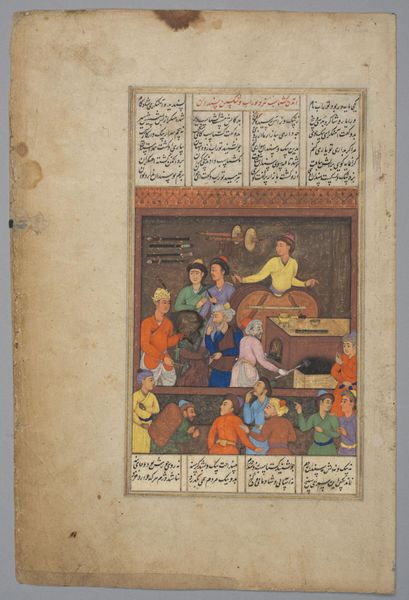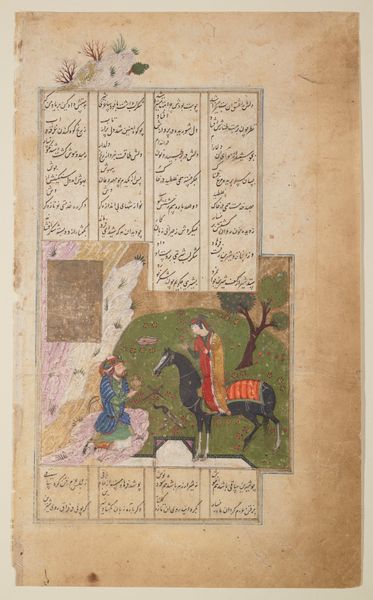
painting, watercolor
#
medieval
#
narrative-art
#
painting
#
figuration
#
watercolor
#
islamic-art
Dimensions: H. 11 1/2 in. (29.2 cm) W. 8 in. (20.3 cm)
Copyright: Public Domain
Editor: This is an illuminated manuscript page from the Khamsa (Quintet) of Nizami of Ganja, dating back to the 15th century. It’s watercolor and ink on paper, currently residing at the Metropolitan Museum of Art. It’s fascinating to me how they packed so much detail into such a small space. What stands out to you in this piece? Curator: I'm immediately drawn to the materials used, the paper, the inks, and the pigments, and their origin. Were these materials locally sourced, or did they come from distant lands through trade routes? This speaks volumes about the economy and material culture of the time. And look closely at the lapis lazuli used in the blue pigment. That wouldn't be found just anywhere. Who were the artisans crafting the paints themselves and preparing the vellum? What social class were they from? The level of patronage that enabled this project is telling, isn't it? Editor: Definitely. I hadn't considered the socioeconomic aspects so deeply. It is quite impressive to know it’s such high value pigment, it seems so precious. So you're less focused on the narrative, but rather the social elements embedded within production? Curator: Precisely. Even the gold leaf, often used in such manuscripts. Its application isn't just aesthetic. It's a statement about the patron's wealth and power and its production through mining practices tells so much of what the political economy of that time was, doesn’t it? Also, note how the figuration and landscape work. It speaks about different levels of skill and potentially several workshops cooperating to create the full illustration. We need to consider that process. Editor: So much to consider! Thanks for reframing my understanding of this manuscript; it’s about more than just illustration. Curator: Exactly, thinking about materials is not apart from, but central to cultural output and the meaning we might glean from this page.
Comments
No comments
Be the first to comment and join the conversation on the ultimate creative platform.

